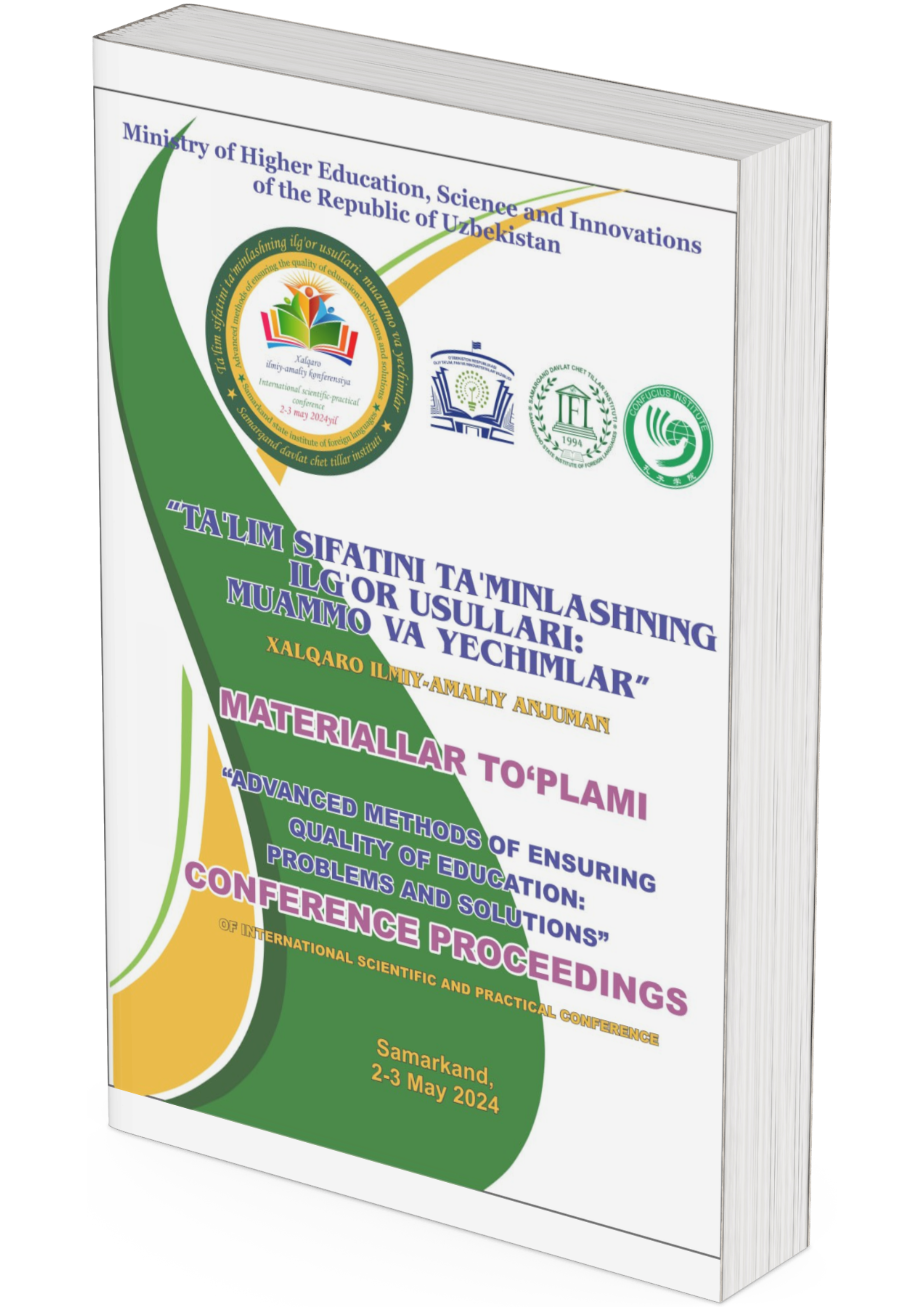USING PROVERBS TO DEVELOP STUDENTS’ INTEGRATED SKILLS
DOI:
https://doi.org/10.2024/8hy9b304Keywords:
Engage, study, activate method, integrated skills, intentional and incidental learning, proverbs and sayingsAbstract
In this article, we describe a lesson plan that was successfully used at Namangan International University. In designing the lesson plan, the engage, study, activate (ESA) method was applied. Students showed good results in productive skills, although they had difficulty in guessing the correct context of the saying at the beginning of the lesson. It is recommended to constantly use proverbs and sayings to develop learners’ integrated skills.
References
Boltakulova G. F. Syntactical Distribution of Components Expressing Temporality in the English and Uzbek Languages //of Chelyabinsk State University.–2016. – 2016. – Т. 9. – С. 49.
Gary Martin https://www.phrases.org.uk/meanings/you-are-what-you-eat.html#google_vignette
Gramling Jack. Thinking outside the pyramid. Child Life Magazine (84:4), 2005. –p.18. https://www.english-corpora.org/coca/
Harmer, J. How to teach English. – China: Pearson Education Limited, 2010 – 290 pages.
Nation, P. (2015). Principles guiding vocabulary learning through extensive reading. Reading in a Foreign Language, 27(1), 136-145.
Speake J. The Oxford Dictionary of Proverbs. – Oxford: Oxford University Press, 2008. – 625 pages.
Wilkins, D. A. (1972). Linguistics in Language Teaching. London: 243 pages
Downloads
Published
Conference Proceedings Volume
Section
License
Copyright (c) 2024 Shuhratjon Boykhanov (Author)

This work is licensed under a Creative Commons Attribution 4.0 International License.









